Porsche Cayenne 955 – The Story
The Moneymaker SUV That Saved Porsche
955 Story / 955 Timeline / 955 Model Guides / 957 Story / 957 Timeline / 957 Model Guides / Misc Data / FAQs / News
Type: 955 & 957
Generation & Chassis: First Gen (9PA) Chassis E1
Manufacturer: Porsche AG
Production Years: 2002 - 2010
Model Years: 2003 - 2010
Body Style: 5-Door SUV
Layout: Front-engine, AWD
Engines: 3.2 L VR6, 3.6 L VR6, 4.5 L V8 (S), 4.5 L TT V8 (Turbo/Turbo S), 4.8 L V8 (S/GTS), 4.8 L TT V8 (Turbo/Turbo S), 3.0 L turbodiesel V6
Transmission: 6-speed Auto (2 versions)
Unveil of official photos: Mar 4 2002
Premiere: Sept 25 2002 at Paris Motor Show press day
Market launch: December 2002
The Cayenne came along at a time when the Porsche company had some real financial troubles. They had a bunch of sports cars in the lineup that weren't selling particularly well and were not mainstream focused in any way. It was the yuppy brand that built expensive sports cars. Porsche needed something mainstream and nothing was more mainstream in the early 2000s like an SUV. Welcome to the world Mr Porsche Cayenne in 2002. Make no mistake, this SUV saved the sports-car company and set it on a financial course that made it the most profitable car company in the world.
The Cayenne was not without controversy. 911 fans balked at the idea of a heavy SUV from Porsche and many predicted it would be a failure. "How could Porsche do this to us? How could Porsche launch a family SUV with the Porsche logo on it?" All of this before they learned that the Porsche Cayenne would in fact share its platform with a Volkswagen (Volkswagen Group PL71 chassis, which it shares with the VW Touareg and Audi Q7). Fast forward a few years and the first generation Cayenne became the best selling Porsche of all times and stayed that way until the end of its production.
The first generation of Cayenne is really two sub-generations. They are known as the Cayenne 955 and the Cayenne 957. The Cayenne 955 was the original launch Cayenne and sold from 2002 until 2007. Models included the base Cayenne, Cayenne S, Cayenne Turbo, and Cayenne Turbo S models. While there was officially no 2007 model year Cayenne in the United States, you could find them in dealers. On the brink of the global recession in 2007, Porsche launched the 2008 Cayenne model, updated and refreshed and known at the Cayenne 957.
The Cayenne 957 covers all Cayennes sold from 2008 to 2010 model years, and includes those same previous models and introduced the Cayenne GTS and the limited edition Cayenne S Transsyberia and GTS Porsche Design Edition 3 as well as the introduction of a Cayenne Diesel. The 957 was not a big update, consisting mainly of a mild facelift and some better technologies and interior design.
The first-generation Porsche Cayenne spanned two distinct model phases, known internally as the 955 (2003–2006) and the facelifted 957 (2007–2010). The original Cayenne 955 debuted in 2003, initially launching in North America with two primary models: the Cayenne S, powered by a 4.5-liter naturally aspirated V8 producing 340 horsepower, and the more powerful Cayenne Turbo, equipped with a 4.5-liter twin-turbocharged V8 generating 450 horsepower. In 2004, Porsche expanded the lineup by introducing an entry-level Cayenne model featuring a 3.2-liter V6 engine with 247 horsepower, broadening the model’s appeal. By 2006, Porsche raised the performance stakes with the introduction of the Cayenne Turbo S, featuring an enhanced 4.5-liter twin-turbo V8 engine developing 520 horsepower, making it the most powerful Cayenne variant at that time.
In 2007, Porsche launched the facelifted 957-generation Cayenne, which introduced updated styling and improved engines. This revision brought a more potent base Cayenne featuring a 3.6-liter VR6 engine rated at 290 horsepower, along with an upgraded Cayenne S, now powered by a larger 4.8-liter V8 generating 385 horsepower. The Turbo variant also received a new 4.8-liter twin-turbocharged V8 engine, boosting output to 500 horsepower. In 2008, Porsche unveiled the sport-focused Cayenne GTS, fitted with a specially tuned naturally aspirated 4.8-liter V8 engine producing 405 horsepower and featuring enhanced suspension and sportier dynamics. Finally, in 2009, the high-performance Cayenne Turbo S made a return, now boasting a remarkable 550 horsepower from its 4.8-liter twin-turbocharged V8. The production run of the first-generation Cayenne concluded in 2010, paving the way for the introduction of the second-generation (958) model in 2011.
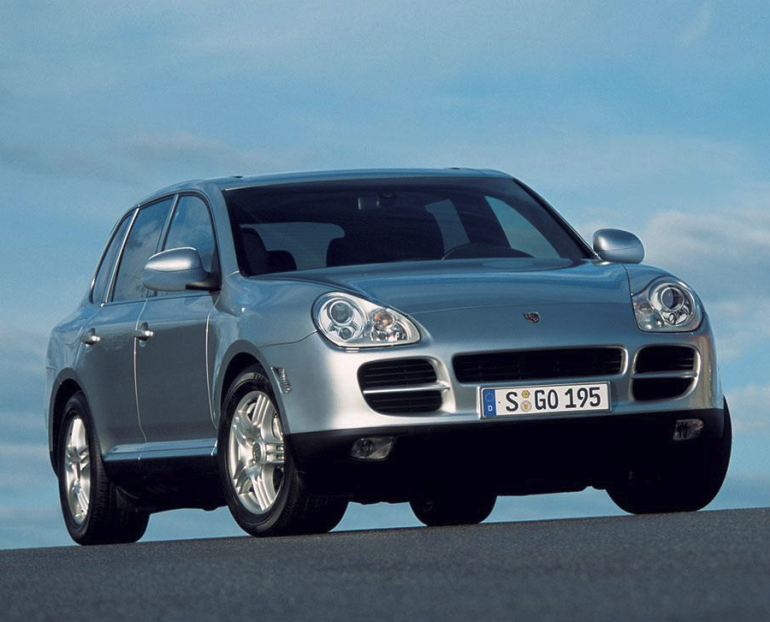
With the launch of the fully off-road Cayenne, Porsche broke new ground and entered the increasingly popular sports utility vehicle (SUV) segment. The vehicle was initially launched on the market in autumn 2002 with the Cayenne S and Cayenne Turbo models. From the model year 2004, the model series was supplemented by the entry-level Cayenne.

When launched on the market in autumn 2002, two model variants were immediately available: the Cayenne S and the Cayenne Turbo. The new Porsche model series leaves nothing to be desired when it comes to performance. Featuring Tiptronic S, the Cayenne S could go from 0 to 100 km/h (0 to 62 mph) in 7.2 seconds and reach a top speed of 242 km/h (150 mph).
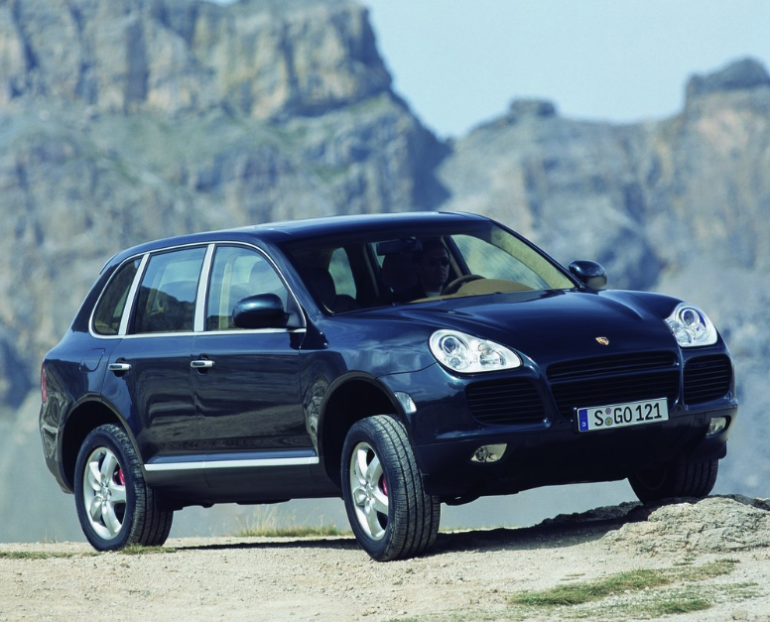
The fastest SUV at the time, the Cayenne Turbo could reach 266 km/h (165 mph) and get to 100 km/h (62 mph) in just 5.6 seconds from a standing start
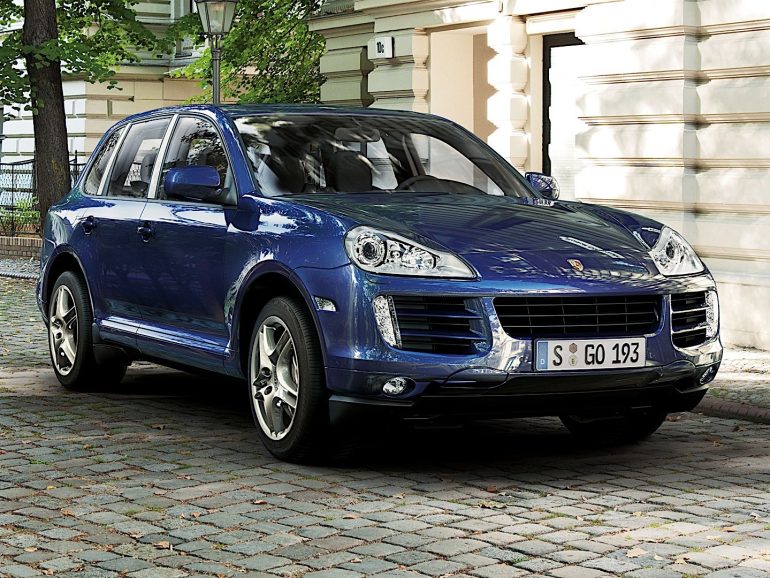
In February 2009, Porsche expanded its model range with a diesel-engine passenger car for the first time. The Cayenne Diesel featured a state-of-the-art V6 turbo diesel engine.
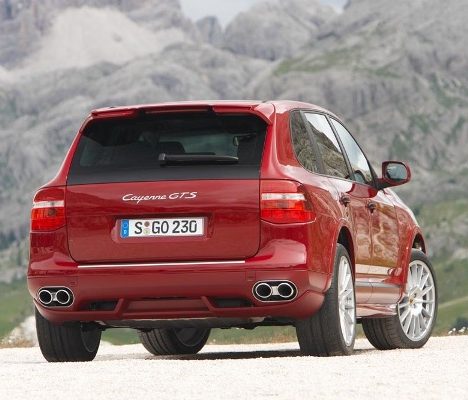
In November 2007, Porsche expanded the model series with a definitively sporty variant fitted with a 298 kW (405 PS) naturally aspirated engine. The chassis of the Cayenne GTS was specially developed for this model variant.
Ok, the first generation Cayenne wasn't exactly a looker, but it was Porsche's first attempt so maybe we give them some grace?
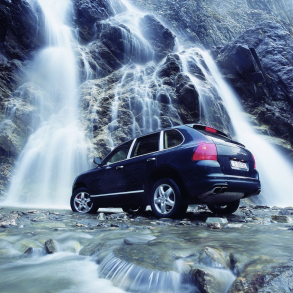
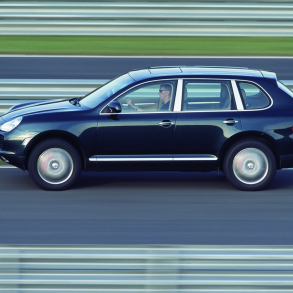
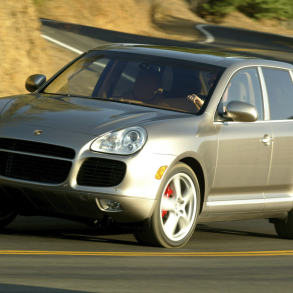
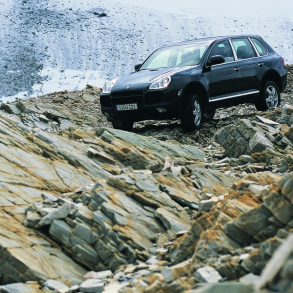
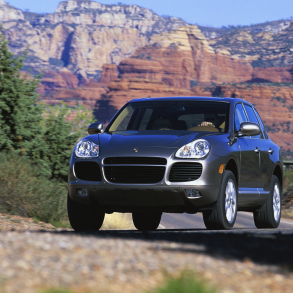
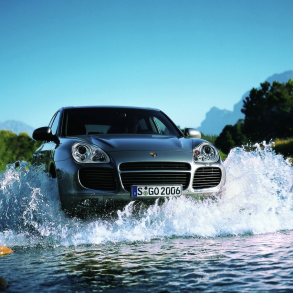
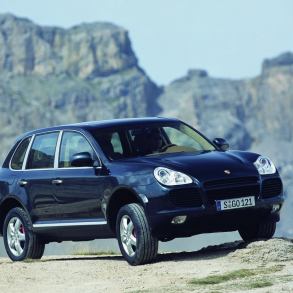
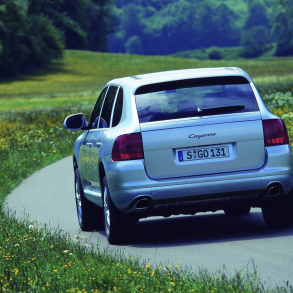

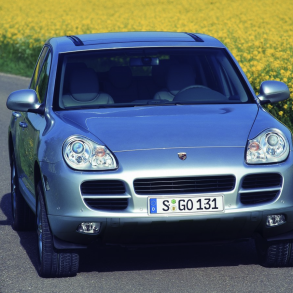
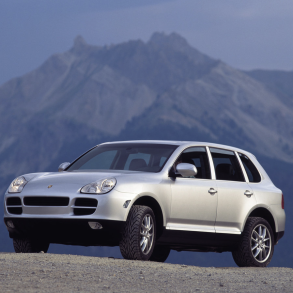

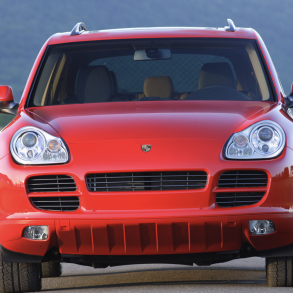
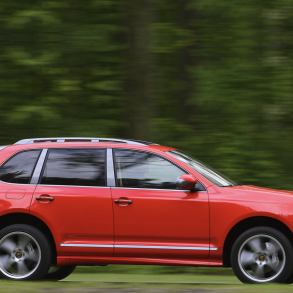

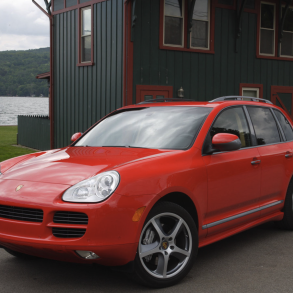
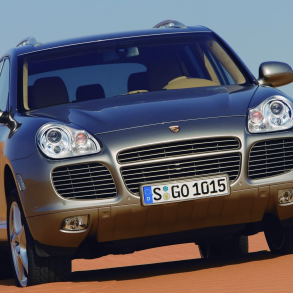
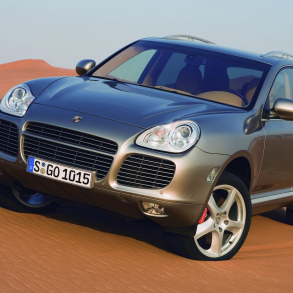
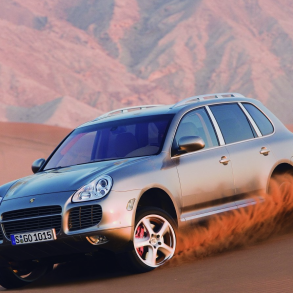
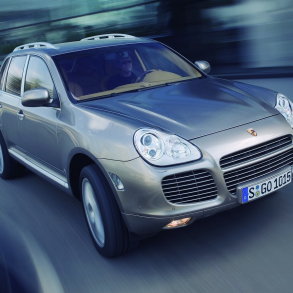
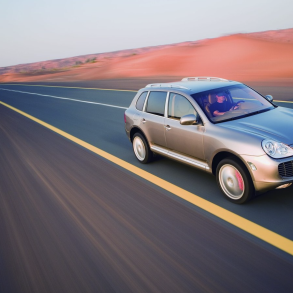
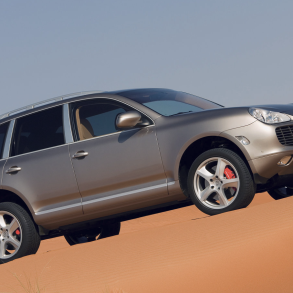

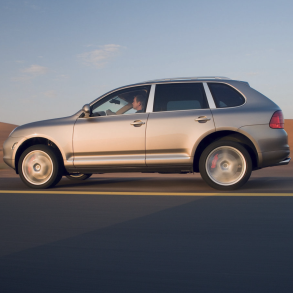
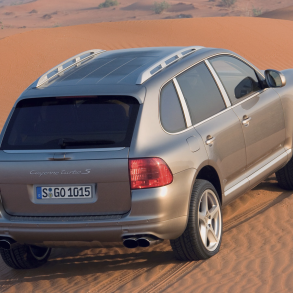
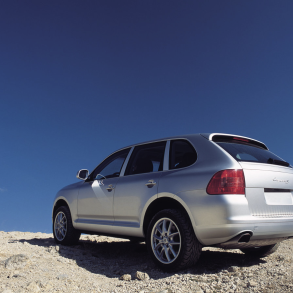
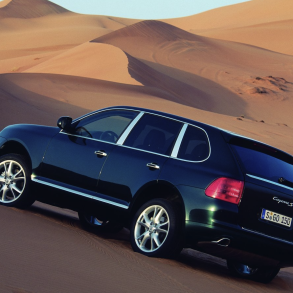
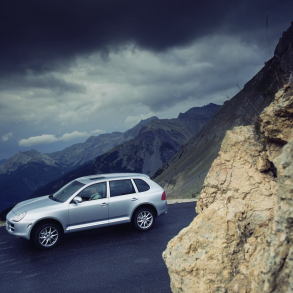


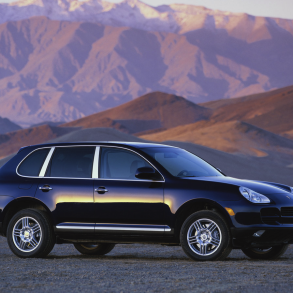
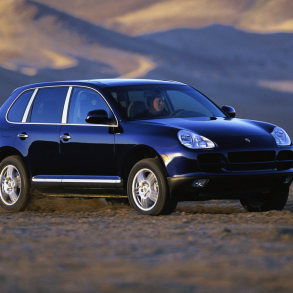
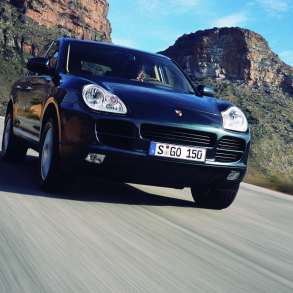
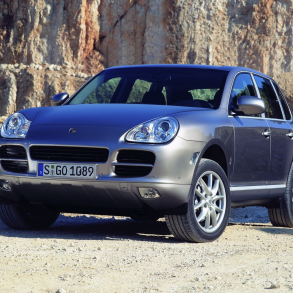
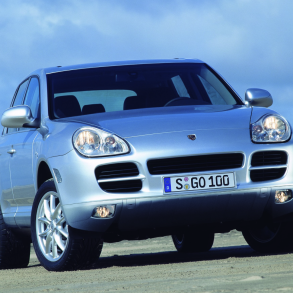
The initial Porsche Cayenne (955 generation) was designed under the leadership of Porsche's head of design at the time, Harm Lagaay. Styling responsibilities were primarily handled by designer Stephen Murkett, who crafted a design that balanced traditional Porsche elements with the practical necessities of an SUV. Additionally, the Cayenne shared its underlying platform and much of its initial design development with Volkswagen, closely paralleling the VW Touareg, as both vehicles emerged from a joint venture between Porsche and Volkswagen.
The first-generation Porsche Cayenne encompasses model years 2003 through 2010. Introduced as Porsche’s very first SUV, the Cayenne represented a bold move for the brand, expanding its lineup beyond traditional sports cars. Internally, the first-generation Cayenne was divided into two distinct phases: the initial 955 generation, running from 2003 to 2006, and the 957 facelift, which covered 2007 to 2010.
The early 955 generation established the Cayenne’s reputation, introducing Porsche’s performance ethos into the luxury SUV segment. The subsequent 957 facelift featured substantial updates in styling, technology, and engine performance, ensuring the Cayenne remained competitive in an increasingly crowded market. Production concluded in 2010, after which Porsche introduced the fully redesigned second-generation Cayenne (958) for the 2011 model year.
The price of a first-generation Porsche Cayenne (produced from 2003 to 2010) varies significantly based on factors such as model variant, condition, mileage, and maintenance history. According to data from Classic.com, the average sale price for these vehicles is approximately $21,664, with recorded sale prices ranging from as low as $2,100 to as high as $91,500.
For instance, base models like the Cayenne 3.2L V6 tend to be more affordable, while higher-performance variants such as the Cayenne Turbo or the limited-production Cayenne Turbo S command higher prices. Additionally, well-maintained examples with lower mileage and desirable features or packages can fetch premium prices.
It's also worth noting that prices can fluctuate based on market demand and regional differences. Therefore, when considering the purchase of a first-generation Porsche Cayenne, it's advisable to research current listings and consult multiple sources to obtain a comprehensive understanding of the prevailing market conditions.
The differences between the first-generation (955/957, 2003–2010) and second-generation (958, 2011–2018) Porsche Cayenne are substantial, covering design, performance, technology, and overall refinement.
The first-generation Cayenne features a more rugged, utilitarian appearance with rounded headlights, conservative lines, and a robust stance. Its styling aligned with the early-2000s Porsche design language and shared its platform with vehicles like the Volkswagen Touareg and Audi Q7. This made it comparatively heavy, impacting handling, fuel efficiency, and performance.
In contrast, the second-generation Cayenne embraced a sleeker, sportier, and more streamlined design inspired by Porsche’s contemporary lineup, particularly the Panamera. Slimmer headlights, smoother body contours, and an overall more modern, athletic stance significantly updated the Cayenne's visual appeal. This generation adopted a lighter platform, significantly reducing weight (around 400 lbs lighter on average), which improved agility, handling precision, and fuel economy.
Inside, the first-generation Cayenne offered functional interiors that were practical yet somewhat dated by today’s standards, particularly regarding infotainment and navigation technology. With the second generation, Porsche dramatically upgraded interior quality, design, and technology. Inspired heavily by the Panamera, the newer Cayenne showcased luxurious materials, enhanced ergonomics, a significantly improved infotainment system, and more advanced driver-assist technologies.
Engine and performance changes between the generations were also noteworthy. The first-generation Cayenne featured naturally aspirated and turbocharged V6 and V8 engines ranging from 3.2 to 4.8 liters, delivering solid power but limited efficiency. The second-generation models brought significant advancements, including direct fuel injection, engine stop-start systems, and the introduction of hybrid and diesel powertrains. These enhancements delivered better performance, lower emissions, and improved fuel economy, especially notable in performance variants like the Cayenne Turbo and Turbo S, which offered significantly increased horsepower and quicker acceleration.
Finally, handling and ride quality saw major improvements in the second generation. While the first-generation Cayenne provided capable but somewhat truck-like dynamics, the second-generation Cayenne, thanks to its lighter construction, advanced suspension systems, and improved chassis tuning, became noticeably sportier, delivering driving dynamics closer to Porsche’s sports-car heritage.
In short, the second-generation Cayenne represented a considerable evolution from its predecessor, becoming lighter, quicker, more luxurious, and more technologically advanced—solidifying Porsche’s commitment to building SUVs that genuinely blend sports-car handling and luxury.
The original Porsche Cayenne was highly innovative, significantly reshaping both the perception of Porsche as a brand and the landscape of luxury performance SUVs. When introduced in 2003, the Cayenne represented Porsche’s bold venture into an entirely new vehicle segment—previously, the company had focused exclusively on sports cars. This move was controversial at first but quickly proved visionary, becoming a template for other high-performance luxury SUVs that followed.
One of the most significant innovations of the Cayenne was how effectively it translated Porsche’s hallmark driving dynamics into an SUV platform. At a time when SUVs were largely considered practical but relatively uninspiring to drive, Porsche introduced sophisticated technology such as an adjustable air suspension, active dampers, advanced all-wheel-drive systems, and Porsche Stability Management. These features combined to give the Cayenne unprecedented agility, handling, and driver engagement for a vehicle of its size and purpose, effectively redefining what an SUV could achieve on-road.
Additionally, the Cayenne Turbo introduced high-performance twin-turbocharged V8 power in a luxury SUV, a significant innovation that paved the way for future high-powered SUVs. Its ability to perform impressively both on pavement and off-road demonstrated Porsche’s engineering excellence and established a new benchmark for versatility in luxury vehicles.
The Cayenne was also special due to the strategic collaboration between Porsche and Volkswagen, sharing platforms and components with the VW Touareg and Audi Q7. This partnership allowed Porsche to benefit from economies of scale and engineering efficiencies while maintaining distinct brand identity through design, handling characteristics, and performance-focused enhancements.
Perhaps most importantly, the Cayenne’s commercial success and profitability enabled Porsche to further invest in its iconic sports cars, contributing directly to the brand’s growth, innovation, and sustained independence. Its launch effectively secured Porsche’s future at a critical time in the company's history, making it a pivotal model in Porsche’s legacy. Ultimately, the innovation and significance of the original Cayenne lie in its boldness, engineering excellence, and the way it successfully fused sports-car DNA into a luxury SUV—setting a trend that transformed the automotive industry.
The speed of the Porsche Cayenne varied significantly depending on the specific model variant, but across its first generation (2003–2010), it was remarkably quick for an SUV of its era.
The initial Cayenne S (2003) with its 4.5-liter V8 produced 340 horsepower, achieving a top speed of approximately 150 mph and accelerating from 0–60 mph in about 6.8 seconds. The base Cayenne, introduced shortly after, with a 3.2-liter V6 producing 247 horsepower, reached a top speed of roughly 133 mph and completed the 0–60 mph sprint in about 9 seconds.
The high-performance Cayenne Turbo dramatically elevated performance expectations. Equipped with a 4.5-liter twin-turbocharged V8 delivering 450 horsepower, it reached 0–60 mph in approximately 5.0 seconds, and had a top speed around 165 mph—exceptionally fast for a large luxury SUV in the early 2000s.
In 2006, Porsche introduced the Cayenne Turbo S, raising the bar even higher with 520 horsepower. This powerful variant could accelerate from 0–60 mph in approximately 4.8 seconds and topped out at about 168 mph, making it one of the fastest SUVs on the market at the time.
After the facelift in 2007 (the 957 generation), performance improved further across the range. For instance, the updated Turbo with a 4.8-liter V8 twin-turbo produced 500 horsepower, managing 0–60 mph in about 4.9 seconds and achieving a top speed of approximately 171 mph. The Cayenne Turbo S returned in 2009, now with 550 horsepower, sprinting from 0–60 mph in just 4.7 seconds and capable of an impressive 174 mph top speed. These performance numbers were groundbreaking for SUVs at the time, solidifying the Cayenne’s status as a benchmark for high-performance luxury SUVs.
For a first-generation Porsche Cayenne, the 2009 or 2010 model year (957 facelift) is widely considered the best choice.
These later-year Cayennes benefitted from significant updates introduced in 2007, including improved engines, enhanced styling, upgraded interiors, and refined reliability. Specifically, the 2009–2010 Cayenne models had addressed many of the earlier-generation issues, making them more dependable and less costly to maintain. Additionally, these models came with advanced technology features, a smoother transmission, and more refined suspension systems.
In terms of desirability, the 2009 Cayenne Turbo S stands out as particularly noteworthy. It offered outstanding performance—550 horsepower, a 0–60 mph time of just 4.7 seconds, and a top speed of approximately 174 mph—along with the highest specification and refinement of the first generation. The Cayenne GTS from the same period is also highly regarded, thanks to its sportier suspension, naturally aspirated V8 engine, and distinctive styling cues.
Therefore, if reliability, refinement, and performance are priorities, the best choice for a first-generation Porsche Cayenne would be a late-model facelifted 957 variant, specifically the 2009 or 2010 Cayenne Turbo, Turbo S, or GTS models.
Join Our Porsche Community
Sign up for our weekly Porsche newsletter. The latest Porsche news, rumors, reviews and more delivered to your inbox. Cool Porsche stuff perfect for the flat-six obsessed.